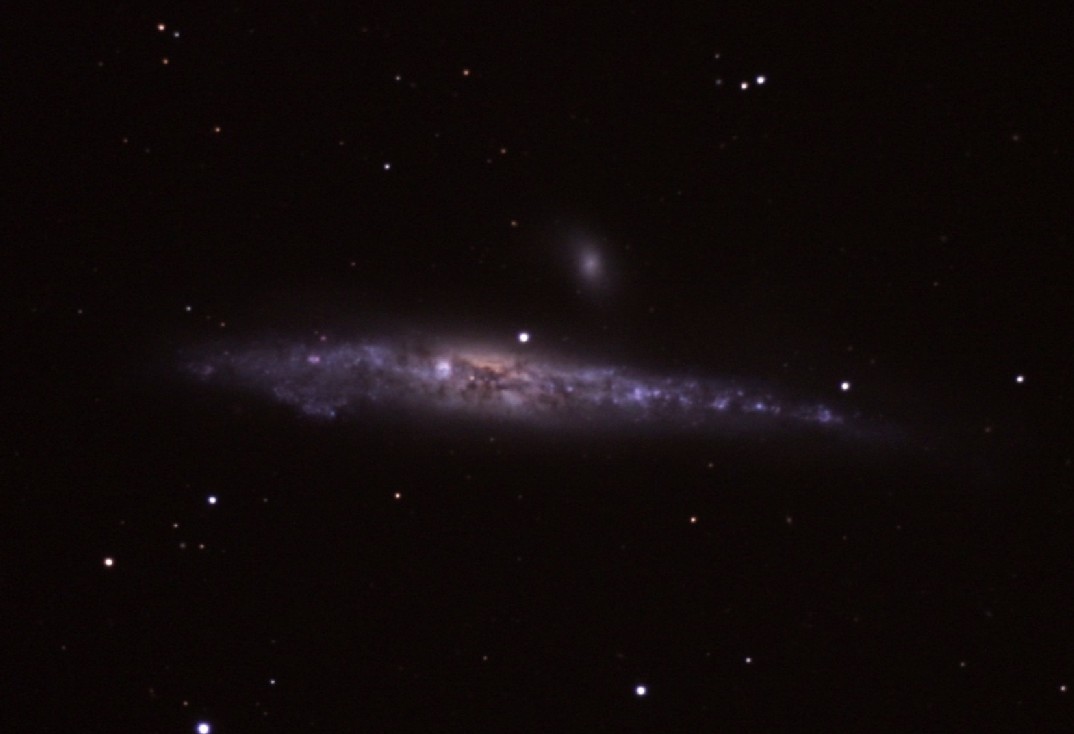
|
|
| Caldwell object #32, C32, (NGC 4631) The Whale and Calf galaxy |
|
A large and bright galaxy, popularly called the whale and calf. It's about 25-30 million light years away, and about 40% larger than our Milky Way. We're looking at it nearly edge on here, with the front edge angled slightly down. There's less dust in this galaxy than most so we can see the core area a little better. Scientists and amateurs keep an eye on this galaxy because it's producing more than the average number of supernova. Our galaxy for example produces about 1 per century. This one has had several in just the last 50 years. This galaxy is much more active than most, with a lot of star formation going on, making it brighter and bluer than it would otherwise be. It's best seen from March through May. It's high in the sky behind Leo, just above and to the east of the Coma Berenices star cluster. It can be detected with binoculars, and is a fun one to test your skills on, but a 10 or 12 inch scope is needed to appreciate and see more detail. C32 is the biggest galaxy of a gravitationally linked group of galaxies. One of the group is the elliptical galaxy (NGC 4627), or the "calf", seen just above it. It is primarily the calf's influence that is causing the high star formation and supernova rates of C32. The front "flipper" of the "whale" is a distortion of one of its spiral arms that is being pulled down by the "hockey stick" galaxy (NGC 4556) that is out of the field of view here, but only a half degree off to the lower right. It is suspected that there are at least a dozen galaxies, and maybe up to 30, that make up C32's group, but it happens that C32 and companions lie in the influence and field of view of the much larger Virgo cluster, that lies another 30 million light years beyond. In fact the C32 group is part of the huge Virgo cluster, but it is hard to separate which of C32's more outlying neighbors are more specifically a part of one or the other. |
|
10"
F6.3 Schmidt Cassegrain Telescope, Modified Canon 40D camera at Prime Focus |